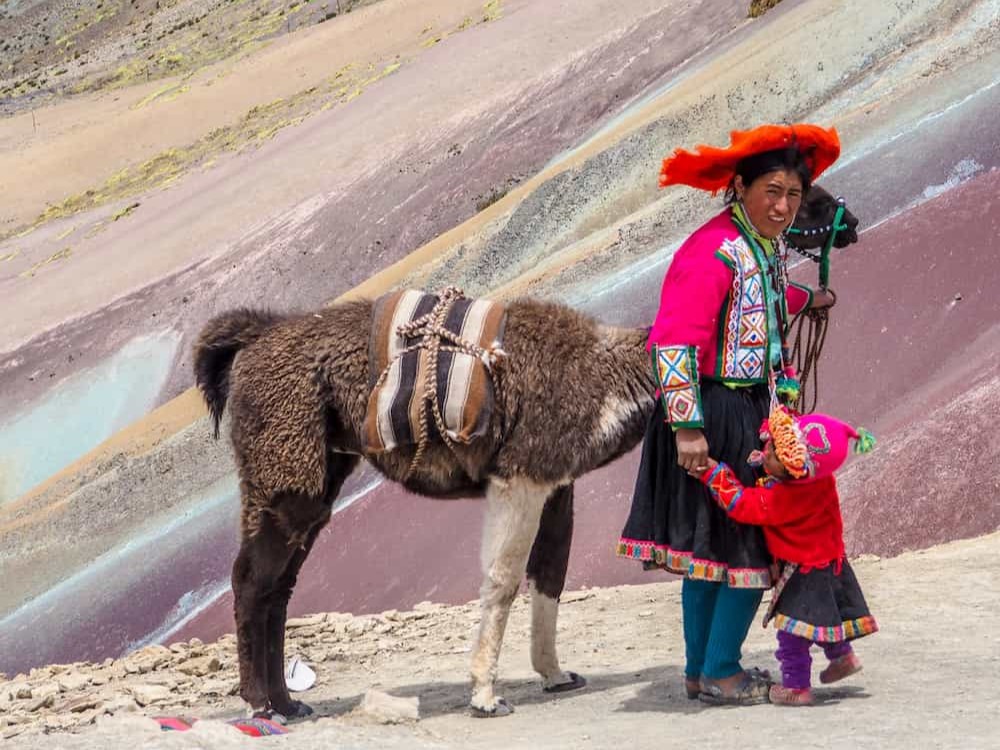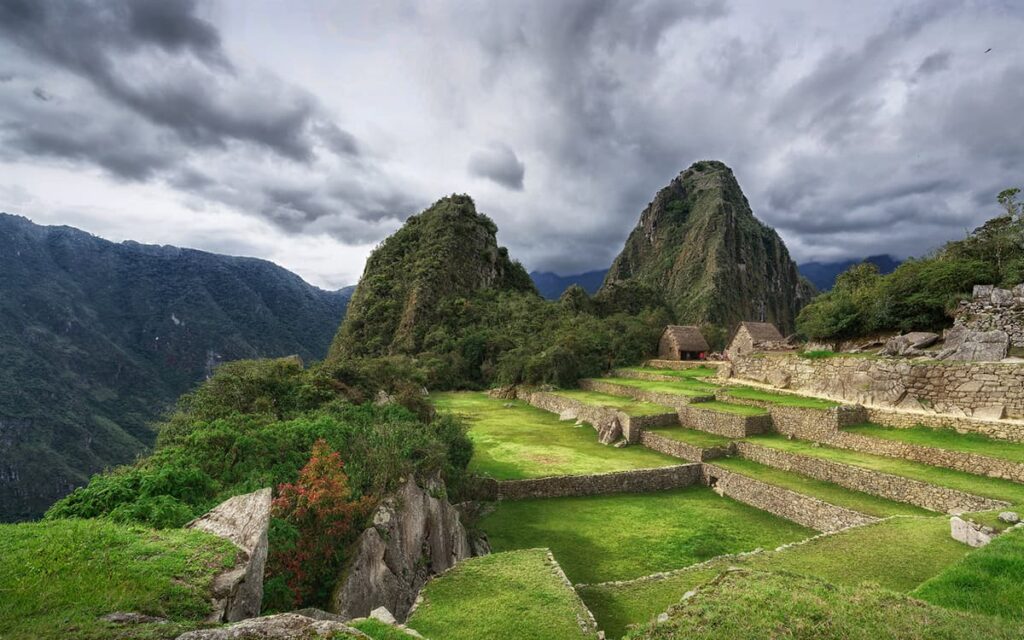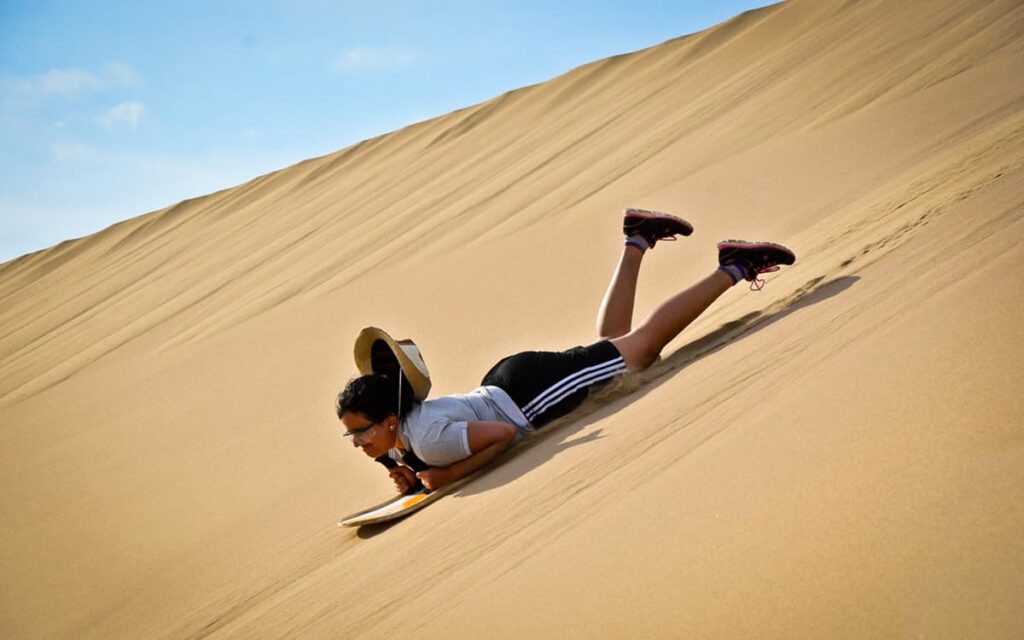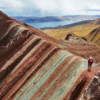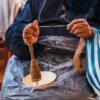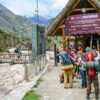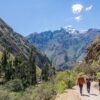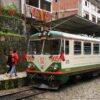Pachacamac in Perú is an archaeological site located on the right bank of the Lurín River, very close to the Pacific Ocean and in front of a group of homonymous islands. It is located in the district of Lurín, in the province of Lima, Peru. It contains the remains of various buildings dating from the Early Intermediate (3rd century) to the Late Horizon (15th century), with buildings from the Inca period (1450-1532) being the best preserved.
There was an ancient pre-Hispanic oracle built basically with adobe bricks. This site was the main place of worship for the god Pachacamac, who was attributed the creation of the universe and everything it contains. And that it has underneath a water tunnel that reaches the entire place but is no longer in use.
The archaeological site is part of the Qhapaq Ñan road network.
Location
It is located 31 km south of Lima.
History of the Sanctuary
Pachacamac in Perú was the main sanctuary of the central coast for more than a thousand years. Its temples were visited by crowds of pilgrims on the occasion of the great Andean rituals, since Pachacamac was a successful oracle capable of predicting the future and controlling the movements of the earth. Inhabitants of all the Andes also came to the Pachacamac sanctuary in search of solutions to their problems or answers to their doubts.
The word Pachacamac means «soul of the earth, the one who animates the world.» The ancient Peruvians believed that a single movement of their head would cause earthquakes. He could not be looked directly in the eye, and even his priests entered the compound from the back. The cult of Pachacamac was the center of all coastal religion.
The Pachacamac Ruins are located in the Lurín valley, which constitutes the territorial framework of its location and on whose margins a series of towns have settled, taking advantage of its waters, for three thousand years. The first occupations date from the Archaic period (5000 BC); then, in the Formative period (1800 BC – 200 BC), Mina Perdida, Cardal and Manchay stand out; In the Late Formative (200 BC – 200 AD) diverse local styles are distinguished such as Tablada de Lurín and Villa El Salvador.
From the archaeological data provided by the investigations, we know that the occupation of the Archaeological Sanctuary of Pachacamac began in the Late Formative, since in the pampas located in front of the monumental zone there is a cemetery corresponding to inhabitants who probably lived dedicated to the fishing, agriculture and the exploitation of the hills. Its ceramics, called El Panel style, include sculptural bottles in the shape of birds and cats. These ancient settlers also excelled in making copper artifacts.
In the period of the Regional Developments (200-600 AD) the Lima culture was developed, which is distributed on the central coast in the contiguous valleys of Chancay, Chillón, Rímac and Lurín. The construction of the sanctuary began in this period, with Pachacamac being the most important center of the Lurín Valley. At that time, both the Old Temple, an imposing mass made with adobitos forming panels with the “bookseller” technique, and the “Adobitos” Lima Adobes Complex were built.
From 600 to 1100 AD. Evidence of the Wari empire is concentrated in Pachacamac. The heyday of the Pachacamac oracle occurred precisely during the Middle Horizon – Wari period, when it became a religious center that attracted a large number of pilgrims reaching its first Pan-Andean splendor. An extensive cemetery, excavated by Max Uhle in 1896, which is located at the foot of and below the Pachacamac Temple, dates from this period, as well as a series of ceramic offerings found in the area.
Around 1100 AD, the Ychma established their center of power in Pachacamac, with a series of residential and administrative settlements that include pyramids with ramps, among others, standing out Tijerales, Quebrada Golondrina, Pacae Redondo and Panquilma, in the Lurín valley. In 1470 the Incas had established an important provincial capital in Pachacamac where buildings such as the Temple of the Sun and the Acllawasi stood out, among others. To the religious importance of Pachacamac in Perú was added its operation as one of the main administrative centers of the coast during this period.
When the Spanish arrived in 1533, Pachacamac was the most important sanctuary on the coast, as the chroniclers’ accounts assure. The abandonment of the Pachacamac sanctuary dates from the colonial era. Over time, prominent researchers such as Max Uhle, Julio C. Tello, Arturo Jiménez Borja, among others, have contributed important research to understand the sanctuary.
Currently, the Ministry of Culture continues to develop a series of research and conservation works to contribute to the knowledge and dissemination of such an important archaeological heritage.
Site description
Pachacamac in Perú is the largest and most important archaeological complex in Lima. It occupies an area of ??465.32 hectares, with a perimeter of 12,925.41 linear meters, and is administered by the Ministry of Culture. It has a museum and cabinets for the analysis, registration and storage of the material.
The site has a visit circuit that begins at the museum and continues with the following attractions:
- Pyramid with ramp N ° 1
- North-South Street
- Taurichumpi
- East-West Street
- Old Temple
- Painted Temple
- Sun Temple
- Pilgrims Square
- Acllawasi
Throughout the circuit we can identify three sectors delimited by old walls:
The ceremonial area, which includes the enclosures that are within the first wall. These are the Temple of the Sun, the Painted Temple, the Old Temple and the area called “the quadrangle”.
The administrative area, located outside the first wall and within the second wall, consisting mainly of 16 pyramids with ramps and other administrative structures, including warehouses, squares, warehouses, etc. In this area you can also find the Plaza de los Peregrinos, the Taurichumpi Building and the Acllawasi.
The area that encloses the third wall, with simpler architecture, probably corresponds to the area of ??domestic use and apparently it was used by the pilgrims who arrived in the area.
Fauna and Flora
Those who have visited the Pachacamac Ruins can see that the archaeological complex is closely linked to its various ecosystems and its different landscapes. Thus, in this place privileged by the diversity of ecosystems, life is also abundant.
The pre-Hispanic crops of Pachacamac
The presence of pre-Hispanic crops in the Pachacamac sanctuary in Perú is a recognition of the importance of agriculture for Andean cultures since ancient times. Thus, agricultural cycles are constituted in vital cycles and in a way of relating again to the land, the care of food, its characteristics and benefits.
The archaeological excavations in Pachacamac Ruins have shown us that during the Inca period there was an intense use of the squares. In these squares feasts were held on special occasions, in which guinea pig, camelids, venison, fish, shellfish and farm products such as beans, corn, sweet potatoes, peanuts, chili peppers, guava, avocado, among others were consumed.
The camelids of the sanctuary
The llama and the alpaca were the most important animals for the pre-Hispanic Andean man, and their domestication began 5000 years ago. The llama was used mainly as a pack animal, which facilitated long-distance travel. Unlike the llama, the alpaca was raised mainly for its fiber used in the manufacture of fabrics.
The guinea pig
The guinea pig is a small rodent native to the Andes. It is considered a traditional species, typical of our mountains and was bred and consumed more than 4000 years ago. In some tombs, guinea pig remains have been found as offerings since their upbringing and consumption was very important for the population of ancient Peru.
Pachacamac coastal birds
The Pachacamac sanctuary in Perú is a place from where you can observe a great variety of birds: kestrels, hawks and, more frequently, the gallinazo, common in this area. If we walk through the monumental area, we can find huerequeques, in the orchard we can observe the flight of the hummingbird and the turtupillín. Swallows, owls and marine and migratory birds also cross the sky of Pachacamac. In the immediate vicinity, the Urpicocha lagoon receives hundreds of migratory birds.
The dogs in Pachacamac
It is commonly believed that the hairless dog was the only domestic dog bred in pre-Hispanic times. This belief is not true, as the ancient Peruvians lived with various breeds of dogs, the hairless dog being one more. The Peruvian hairless dog is very common on the north coast and its ceramic representations appear in Pachacamac during the Inca period. This dog is the cultural heritage of the Nation and is protected by the State.
Studies carried out in Pachacamac Ruins have reported a series of burials of dogs with hair that are short.
Pachacamac site museum
The Pachacamac Site Museum, belonging to the Ministry of Culture, was founded in 1965 during the government of Fernando Belaunde Terry, its first director being Dr. Arturo Jimenez Borja.
The museum serves as a prelude to the visit to the Sanctuary, explains its importance and shows the main archaeological finds from the site. The idol of Pachacamac and the ornate cloth door with Spondylus valves stand out, both from the excavations carried out in the Painted Temple by Alberto Giesecke.
Other outstanding elements of the museum are the series of sculptural ceramic offerings dating from the Wari period (700 – 1100 AD) where representations of fish, characters and plants stand out. Likewise, the series of Inca quipus from an enclosure near the Palace of Taurichumpi.
The museum is organized in a thematic way showing the entire cultural sequence of the Pachacamac Sanctuary, from more or less 200 AD until the establishment of the Incas in 1470. In 1533 the Spanish arrived in Pachacamac and the process of abandonment began.
If you travel to Perú, we also recommend you to visit another impressive destinations in the city of Cusco like the tour to rainbow mountain peru or the humantay lake tour from cusco, which only takes one day. But if you are gonna to stay more days in Cusco, other archaeological places you can know will be the choquequirao trek peru, the salkantay trek to machu picchu, and the classic inca trail 4 days 3 nights.

